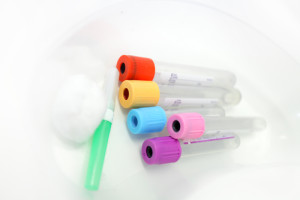By Tabitha Moe and Jeremy Feldman
 For patients with congenital heart disease related PAH (PAH-CHD), a new blood test called Cystatin C is showing promise as a tool to help your doctor determine if you are at risk for problems related to PAH. Such problems might include admission to the hospital, abnormal heart rhythms and worsening heart failure.
For patients with congenital heart disease related PAH (PAH-CHD), a new blood test called Cystatin C is showing promise as a tool to help your doctor determine if you are at risk for problems related to PAH. Such problems might include admission to the hospital, abnormal heart rhythms and worsening heart failure.
What is Cystatin C?
Cystatin C is a hormone that is released by many different tissues in the body. In patients with PAH, higher levels of the hormone are believed to be related to increased stress on the right side of the heart. The kidneys remove Cystatin C from the blood. Rising levels of Cystatin C may also be seen with worsening kidney function.
How might Cystatin C be used in the care of PAH patients?
We are always looking for new tests that help your doctor determine how you are doing and if you might benefit from more intensive treatment. Currently your PAH doctor determines how you are doing by talking to you, examining you, running blood tests such as B-Type Natriuretic Peptide (BNP), looking at your heart function with an echocardiogram and measuring your pulmonary artery pressures and blood flow with cardiac catheterization. Cystatin C may provide additional information that could help determine if you are at risk for deteriorating, especially when combined with our existing tests. If you were at higher risk of having problems, it may allow your doctor to make changes to your treatment regimen.
Cystatin C is in its infancy. Stay tuned as we learn more about how to use this exciting new test in PAH.
